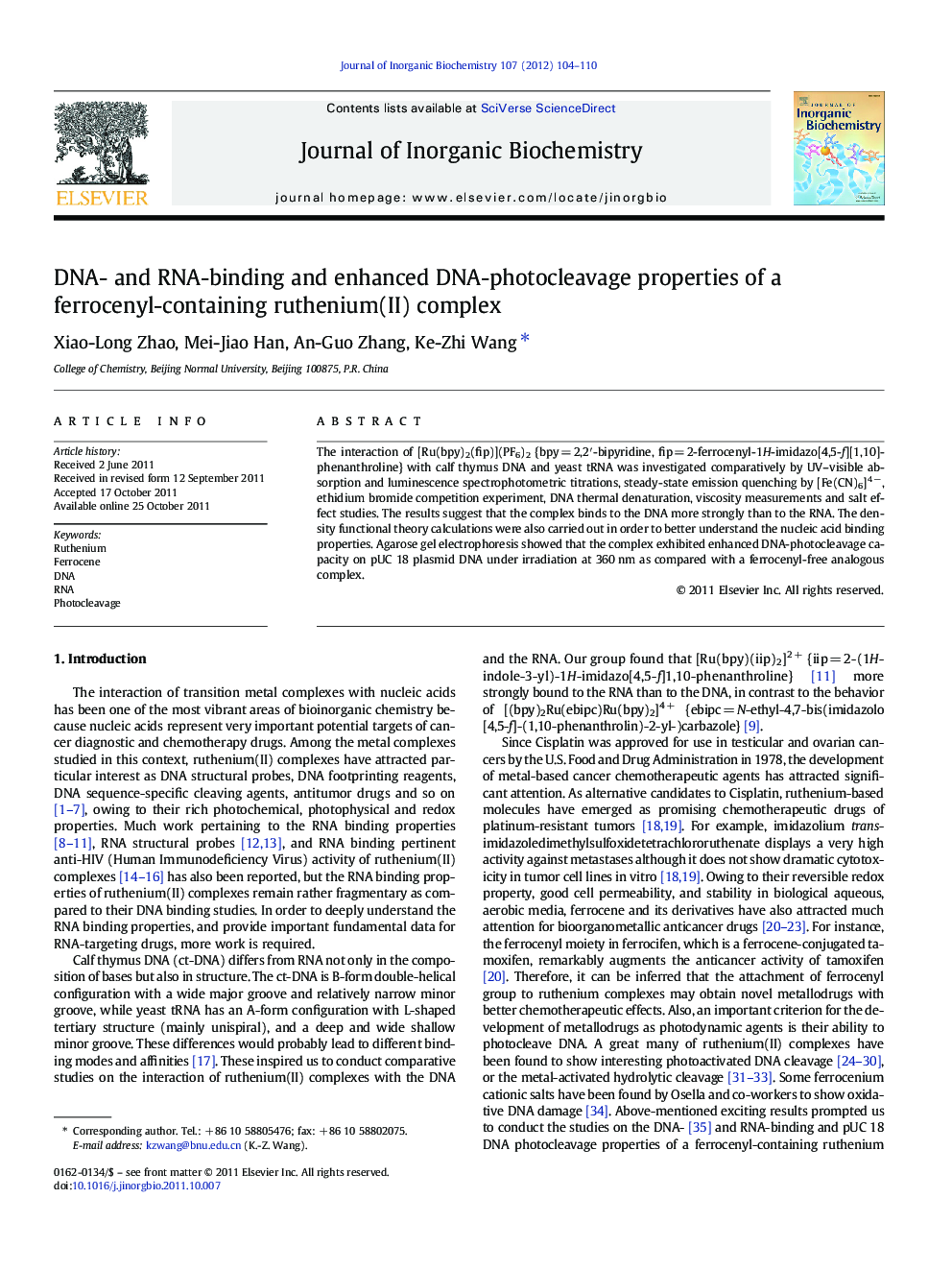| Article ID | Journal | Published Year | Pages | File Type |
|---|---|---|---|---|
| 1317836 | Journal of Inorganic Biochemistry | 2012 | 7 Pages |
The interaction of [Ru(bpy)2(fip)](PF6)2 {bpy = 2,2′-bipyridine, fip = 2-ferrocenyl-1H-imidazo[4,5-f][1,10]-phenanthroline} with calf thymus DNA and yeast tRNA was investigated comparatively by UV–visible absorption and luminescence spectrophotometric titrations, steady-state emission quenching by [Fe(CN)6]4 −, ethidium bromide competition experiment, DNA thermal denaturation, viscosity measurements and salt effect studies. The results suggest that the complex binds to the DNA more strongly than to the RNA. The density functional theory calculations were also carried out in order to better understand the nucleic acid binding properties. Agarose gel electrophoresis showed that the complex exhibited enhanced DNA-photocleavage capacity on pUC 18 plasmid DNA under irradiation at 360 nm as compared with a ferrocenyl-free analogous complex.
Graphical abstractA ferrocenyl-appended Ru(II) complex exhibited much enhanced DNA-binding and photocleavage properties compared to a ferrocenyl-free analogous Ru(II) complex. A dominant intercalative DNA-binding mode coexisted with groove binding was evidenced by spectroscopic and viscosity measurements. The complex also bound to yeast t-RNA less strongly than to the DNA.Figure optionsDownload full-size imageDownload as PowerPoint slideHighlights► A ferrocenyl-appended ruthenium complex. ► Enhanced DNA-binding and photocleavage properties. ► Support by viscosity, spectroscopy and theoretical calculations.
